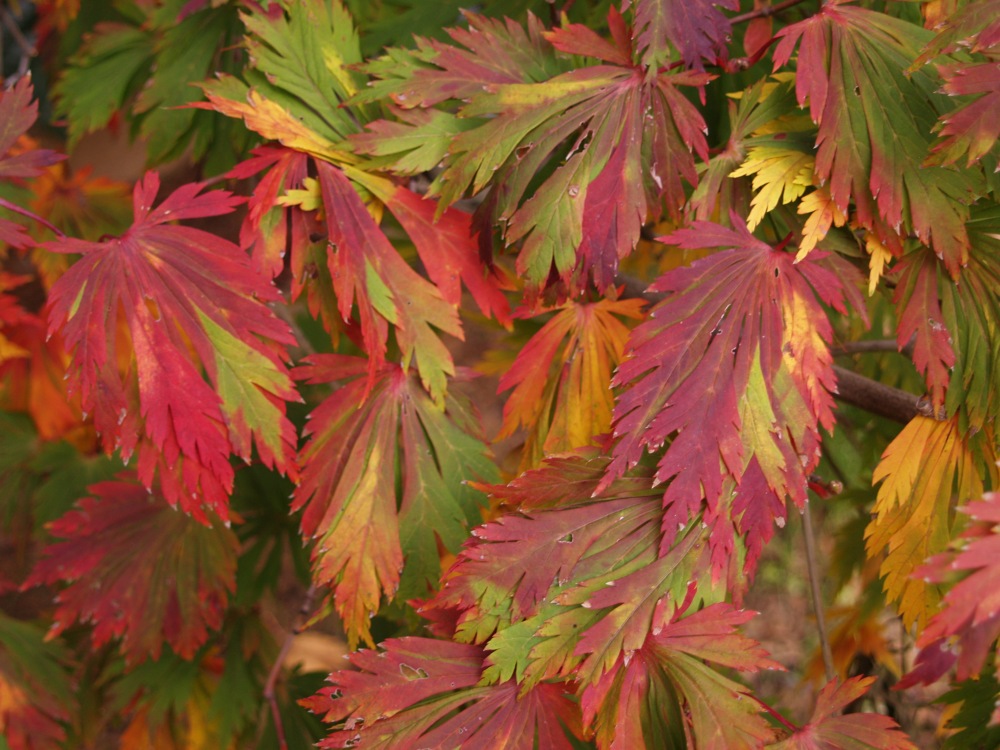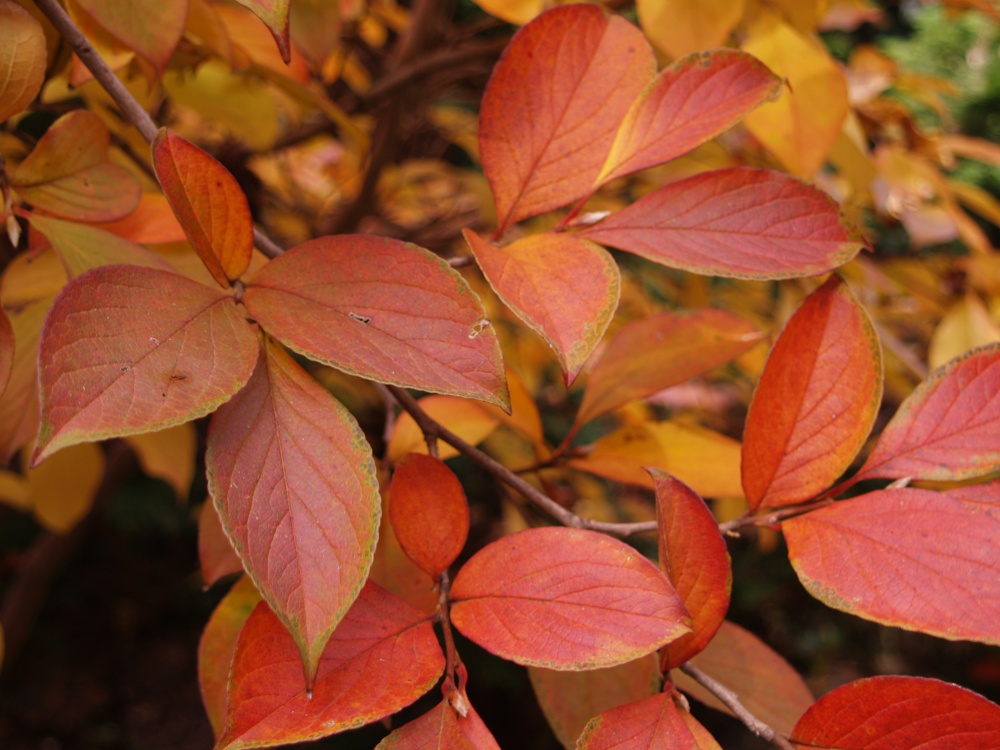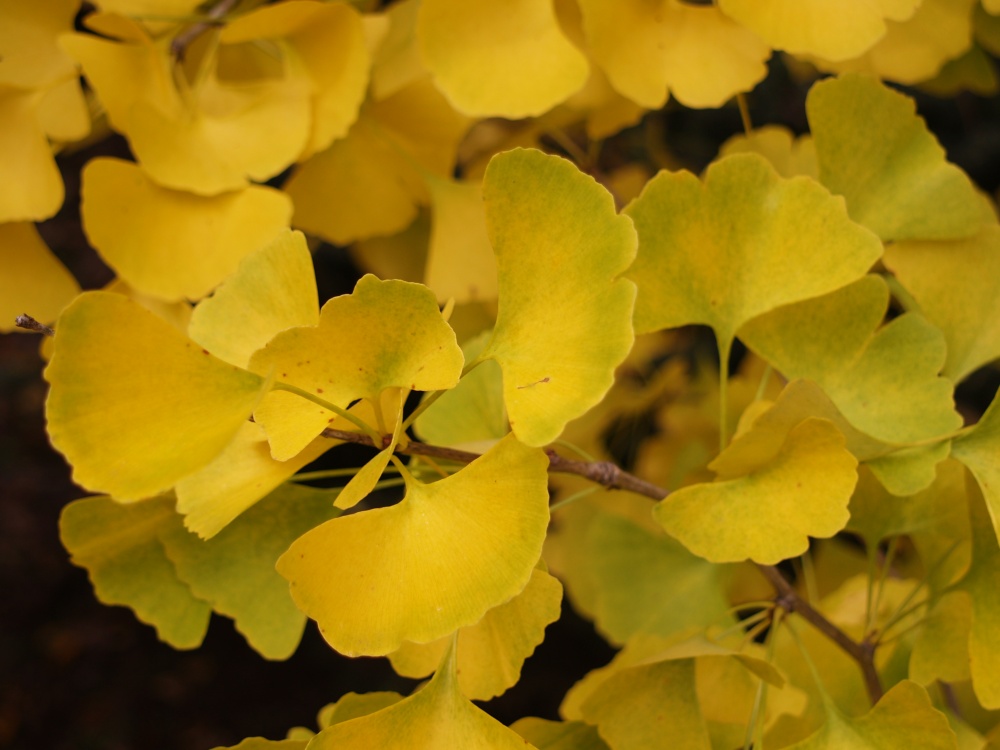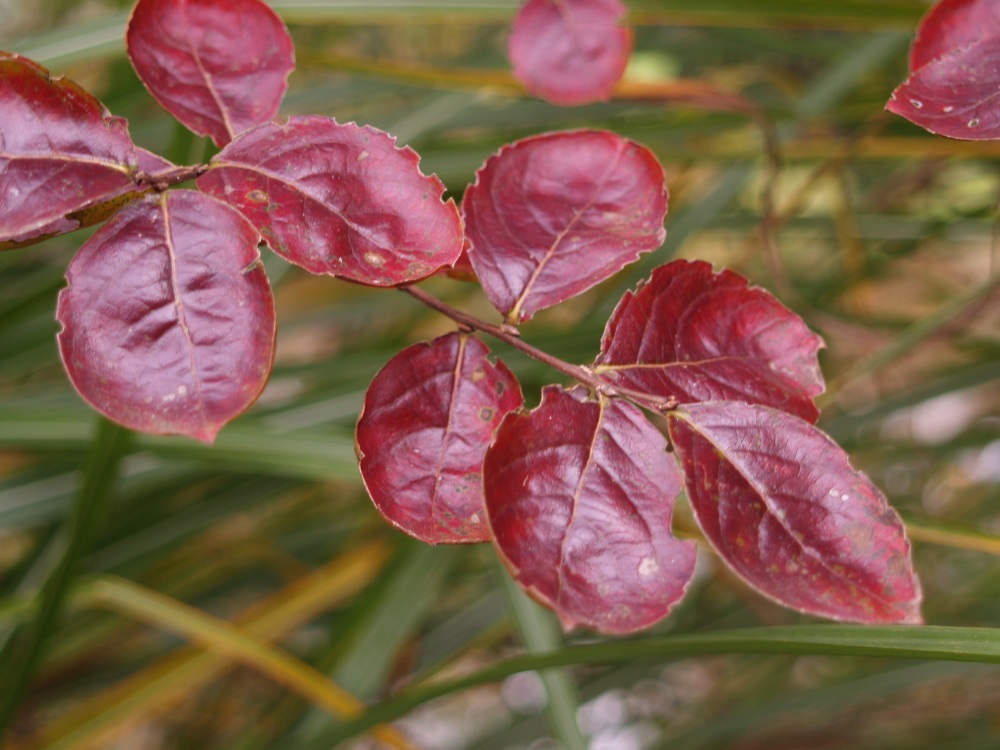Along the southern border of the garden are tall tulip poplars (Liriodendron tulipifera) and swamp red maples (Acer rubrum) that straddle a narrow spring fed creek. In autumn the foliage colors of these forest trees are unremarkable. The poplars turn yellow early and leaves drop in a hurry, and the maples change to a sad yellow without a trace of the red promised by their common name.
Numerous cultivars of red maple in the nursery trade turn dependably to one shade of red or another, but if maples were the only choice I’d prefer the sugar maple (Acer saccharum, above). A planting of sugar maples at the edge of a parking lot at the local community college is a spectacular sight, but with a nearby forest of giants I have opted for slightly smaller trees in my garden, with a variety of delightful autumn foliage colors.
For me, the best of the lot is the fern leaf Japanese maple (Acer aconitifolium, above), with large, deeply dissected green leaves until early October, which then turn to shades of red with a mottling of yellow. The west and southwestern sides change first, but the leaves hang on deep into November so that there is a different experience from each side of the tree. While many Japanese maples display their autumn foliage color early, others will not begin to change until the second week in November, after leaves of most trees have fallen.
Only a few paces away in the garden is stewartia (Stewartia pseudocamellia, above), with orange-red foliage, but with some branches with leaves that are nearly golden. These also turn early and hold onto the tree for a month or longer. 
A time or two each decade the white camellia-like flowers of Franklin tree (Franklinia altamaha, above) persist late into September when its foliage begins to turn. This year the blooms faded early, but the glossy dark green leaves have turned to a magnificent, polished red, though parts of the tree remain green at the start of November and will change slowly over the next few weeks before they drop.

While poplars and maples are often a disappointing and washed out yellow, the maidenhair tree (Ginkgo biloba, above) has the most brilliant, neon yellow glow for ten days, and then the leaves drop suddenly within a few hours. Even the yellow blanket of fallen leaves is lovely for another week until they turn brown and disappear.
Crapemyrtles (Lagerstroemia) are rarely considered for their autumn foliage colors, but many are outstanding. ‘Sioux’ (above) changes to a dark burgundy by mid October, and leaves persist into November. Along with its attractive peeling bark, this is an exceptional tree even when it’s not blooming. 
There are a variety of dogwoods in the garden, and many exhibit delightful autumn foliage colors that persist for a month or longer. The Chinese dogwoods (Cornus kousa) have not begun to change, but the native dogwood (Cornus florida) and several of the hybrids have been splendid this year. The native dogwoods suffered in the mid summer heat and colored early so that most foliage fell by late in October, but the hybrid ‘Venus’ (above) barely was bothered in summer, and only started to show its mottled color a few weeks ago.
I have not mentioned the black gums (Nyssa sylvatica) that are among the most prized for their autumn foliage, but for whatever reason two trees in the garden, one a native and the other the cultivar ‘Wildfire’, have been less than satisfactory this year. Other trees have been superior this autumn, and in a few days we’ll take a look at colorful foliage of some of the shrubs in the garden.
